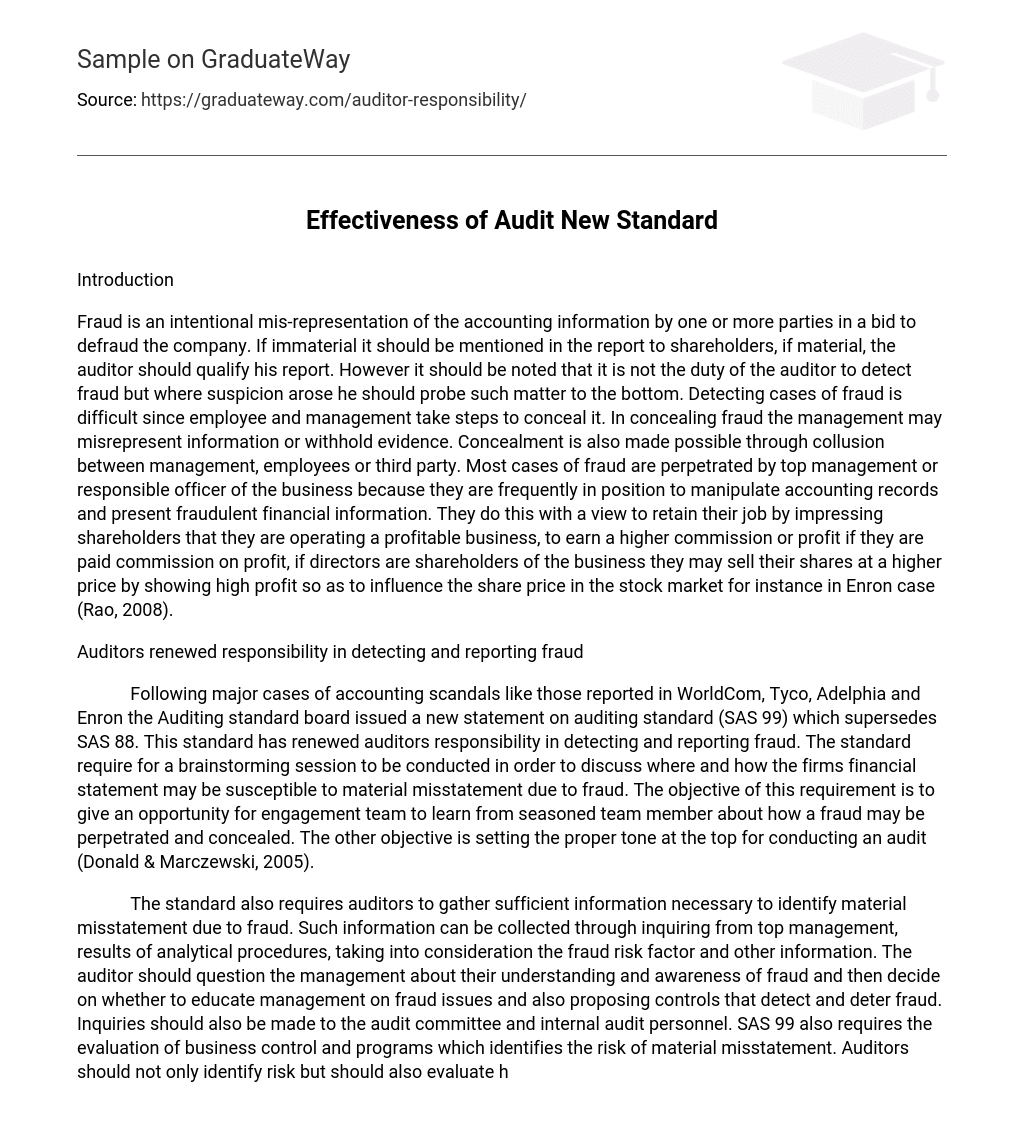Introduction
Fraud is an intentional mis-representation of the accounting information by one or more parties in a bid to defraud the company. If immaterial it should be mentioned in the report to shareholders, if material, the auditor should qualify his report. However it should be noted that it is not the duty of the auditor to detect fraud but where suspicion arose he should probe such matter to the bottom. Detecting cases of fraud is difficult since employee and management take steps to conceal it. In concealing fraud the management may misrepresent information or withhold evidence. Concealment is also made possible through collusion between management, employees or third party. Most cases of fraud are perpetrated by top management or responsible officer of the business because they are frequently in position to manipulate accounting records and present fraudulent financial information. They do this with a view to retain their job by impressing shareholders that they are operating a profitable business, to earn a higher commission or profit if they are paid commission on profit, if directors are shareholders of the business they may sell their shares at a higher price by showing high profit so as to influence the share price in the stock market for instance in Enron case (Rao, 2008).
Auditors renewed responsibility in detecting and reporting fraud
Following major cases of accounting scandals like those reported in WorldCom, Tyco, Adelphia and Enron the Auditing standard board issued a new statement on auditing standard (SAS 99) which supersedes SAS 88. This standard has renewed auditors responsibility in detecting and reporting fraud. The standard require for a brainstorming session to be conducted in order to discuss where and how the firms financial statement may be susceptible to material misstatement due to fraud. The objective of this requirement is to give an opportunity for engagement team to learn from seasoned team member about how a fraud may be perpetrated and concealed. The other objective is setting the proper tone at the top for conducting an audit (Donald & Marczewski, 2005).
The standard also requires auditors to gather sufficient information necessary to identify material misstatement due to fraud. Such information can be collected through inquiring from top management, results of analytical procedures, taking into consideration the fraud risk factor and other information. The auditor should question the management about their understanding and awareness of fraud and then decide on whether to educate management on fraud issues and also proposing controls that detect and deter fraud. Inquiries should also be made to the audit committee and internal audit personnel. SAS 99 also requires the evaluation of business control and programs which identifies the risk of material misstatement. Auditors should not only identify risk but should also evaluate how those risks can lead to material misstatement (Jon & Bill, 2008).
The standard also requires the assessment of risk related to material misstatement due to fraud during the whole audit process and upon completion of the audit the auditor should also evaluate whether observations and accumulated results of audit procedure affect the assessment. The standard also provides that the auditor must communicate existence of fraud to management and others irrespective of the level of severity. Finally the standard also require the auditor to undertake documentation of brainstorming session, procedures performed, risks of material misstatement due to fraud, results of procedures performed and nature of communication about fraud (George,2006).
Conclusion
The new standard not only increase the effectiveness of audit but has also emphasizes on assessment of revenue recognition and management override of control and this may act to reduce companies collapse from scandals related to fraud.
Reference:
Donald, C & Marczewski, M 2005, CPAs perceptions of the impact of SAS 99,
http://www.nysscpa.org/cpajournal/2005/605/essentials/p38.htm, retrieved on 8
June 2009.
George, J 2006, Worldwide financial reporting: the development and future of
accounting standards, Oxford University Press.
Jon A. and Bill D, 2008, Financial accounting standards: explanation and analysis,
University of Virginia.
Rao, V 2008, Corporate Management, Governance, and Ethics Best Practices, John
Wiley and Sons.





